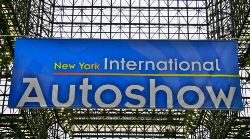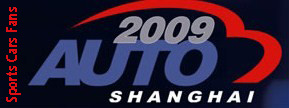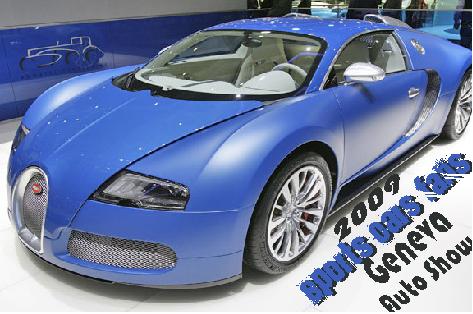First Drive: 2010 Ford Flex EcoBoost

Just a year after the Ford Flex first appeared, the Blue Oval has revamped its lineup in ways that make the 2010 model quite different from its forebearer. First among the changes is the Blue Oval's EcoBoost engine, which packs 3.5 liters of displacement and a duo of turbochargers to produce V8 power with V6 fuel economy. Autoblog went to the Colorado hinterlands to spend some with with the Flex and its new powerplant, and as we found out, there's more to Ford's boxy crossover than boosted performance and fuel economy.
First came wagons, and they ruled the American landscape for decades. Then body-on-frame SUVs (previously known simply as "trucks") remade the wagon by hoisting it up and adding four-wheel-drive. When the price of SUV feedstock – gas – went ballistic, their owners fled into crossovers, which remade the SUV by being lighter, nicer to drive and easier on the debit card. Then came the Ford Flex, which set out to rework both the SUV and CUV by providing 'ute-like room with a car-like ride, even though the car-like seating position is what drove wagons into the swamps and tarpits in the first place.
The design theory behind the Flex – to an outsider at least – is simple: a little box and a big box on wheels. And not far off the ground. The crucial aspect of the theory is that the Flex isn't meant to be compared against traditional CUVs; Ford has put it in the pit with full-sized SUVs like Chevrolet's Suburban and Tahoe, Dodge's Durango, Toyota's Sequoia and Jeep's Commander. And while it fights the heavyweights, it's also meant to dispatch miscellaneous challengers like General Motors' Lambda quadrouplets, the GMC Acadia/Saturn Outlook/Chevrolet Traverse/Buick Enclave, and, oh yeah, minivans.
According to the automaker's research, the Flex is doing all the right things from a brand perspective. Forty-percent of buyers are conquest sales, more than half of that coming from Toyota and Honda, and 49% of them are new to the Ford family.




If they're after simplicity of design, they've come to the right place. The 2010 doesn't sport any salient changes over the previous models – not surprising considering Ford believes it has "the coolest wrapper out there" and "an interior to die for." Take a bristle brush to the hyperbole, though, and what you find underneath remains convincing.
The Flex's packaging is hard not to like. That doesn't mean you'll love the styling (it's polarizing by design), but it's hard to fault the spacial efficiencies won by the vehicle's squared-off shape. How does one get angry at a rectangle? We are in the "Don't Mind It" camp, but when it's SEMA-fied with some extra large wheels, we walk across the aisle to "We Dig It." This latest version offers 18-, 19-, and 20-inch wheels, and the latter size adds a sliver more presence and doesn't unduly compromise the ride.

Inside the Flex's big box, one encounters many of the same sensations found in a big box store: lots of space and everything in bulk. The back of the car resides somewhere across the state line. The seats are huge. The cupholders are huge. The center console cover was once the deck of a battleship. True, with the third-row seats deployed, you lose half of your luggage space, and the area between them and the tailgate is only good for a couple of upright suitcases. But knowing how rarely those contingency seats will probably be used, there's still room for five in the first two rows (if you don't opt for the second-row captain's chairs), and 43 cubic feet of space behind the second set of thrones. That matches the Highlander and comes in about 25 cu. ft. down on the Acadia.
The Flex's seats are fine places to be: big, flat, comfy chairs perfectly cushy and supportive enough to get you over the long haul without noticing. Opt for the leather package with cross stitching and you've got a sufficiently decorated interior with plenty of contrasts in materials, along with a leather-wrapped shifter and three different dash plastic textures. Electronic frills include audio by Sony, rear climate settings adjustable from the front, USB and auxiliary ports, Sync, and optional navigation via a brilliant touchscreen.




However, the item we came to see is nestled within the little box up front: the 3.5-liter EcoBoost V6. In just one day with the car, Ford drilled this line into us, "EcoBoost is more than just an engine." As reported in our Lincoln MKS EcoBoost review, the engine alone has plenty of draw. But the point here wasn't to merely install an engine and then promote the engine's benefits – the point was to produce a premium car that made a better driving argument.
So on top of the 350 horsepower, 355 pound-feet of torque and EPA fuel-economy figures of 16 mpg city/22 mpg highway, Ford lowered the Flex by 10 mm, installed stiffer springs, increased the damping rates and put the package on 20-inch rolling stock. The transmission is also upgraded with new clutches, a better torque converter, and it can be operated with paddle shifters – a segment first. Shifting times are comparable with BMW, and downshifts are rev-matched.
While those changes were made just on the EcoBoost models – the SEL and Limited – there was one change made on those two and the base SE Flex: the addition of a tilt and telescoping steering wheel.




The reason Ford took us to the capillary-taxing altitude of 5,340 feet, and then higher, was to show off the EcoBoost's skills in thinner air versus its naturally-aspirated competition. Although not exactly a useful comparison since most people don't have addresses above the cloud layer, we can testify that the EcoBoost did easily out-handle the competitor vehicles Ford brought out for the test. But before we got to the head-to-head testing, we had to drive another 3,000 feet skyward.
Standard driving is notable by the virtue of not noticing it. The EcoBoost'd Flex drives like a nicely sorted, and much lighter, car. The increased bodyroll management makes for probably the smoothest CUV driving experience we can remember. Grab the thick, leather-lined steering wheel and guide the Flex like you would any other car. No amusement park rollercoastering, no dancing from side-to-side. It's a job well done. You can put the car into "M" and play with the paddle shifters, availing yourself of rapid, seamless gear changes. But there is no need to – in "Drive" we found the car obediently answered all commands.


Nevertheless, as with so many other crossovers with car-like rides, braking is there to remind you of what you're really driving. The Flex's brakes are fine, and emergency stopping is handled efficiently and without heart-stopping yaw moments. But that's when those two-and-a-half tons say "Don't forget about me." If you drive the Flex like the car it feels like through miles of mountains, you'll receive the faintest olfactory reminder from the brakes when you stop and step outside. Admittedly, it took a day of dancing through the Rockies to achieve that effect, but we'd be a bit more wary if we were towing something.
About that: New features on the Flex that are meant to take that exemplary driving experience and make it more versatile: pull drift compensation, trailer sway control, park assist, and grade assist. Grade assist is the simplest addition, employing an overdrive lockout and engine braking to help maintain speed on long downhills.
The other three features are made possible by the Electronic Power-Assisted Steering (EPAS). We didn't get a chance to try it, but pull drift compensation addresses driving in crosswinds or crowned roads, when the car has a tendency to meander to one side. The system detects the condition and then provides torque assistance to ease the effort on the driver of keeping the car straight.

Ford touts the Flex's 4,500-pound trailering ability, so it has added trailer sway control to make the experience a safer one. The same system introduced on the 2009 F-150, it detects the trailer forces acting on the car and driver inputs to the wheel in excess of a few degrees. If it perceives trailer sway, asymmetric braking is applied to counteract the movements, and engine power can be cut if necessary.
Thankfully, we didn't get a chance to experience that either, but we did pull 2,500-pound trailers with the Flex and compared them to naturally aspirated competition. As expected, the twin turbos in the Ford made the difference at altitude, making a quantifiable difference in pulling up hills and on flats. We can't really justify dinging the competition for falling behind at alpine heights, but we can say that if you're thinking about a Flex but are concerned about towing, you can check that box off with confidence. The Flex won't waste time getting you where you're going, even with a couple of jet skis (or a track-ready ride) behind it.

Thanks to parking assist, the Parallel Parking Phobia that apparently afflicts a large swath of the population has finally been addressed with a system that truly works. Ford had brought another brand's $90,000 luxury sedan with its own self-parking system for comparison, but the demonstration was so lopsided that, out of kindness for the technologically-challenged, we don't even want to mention the other car (you know the one). Ford's system doesn't do only half the work, it finishes the job for you.
As you begin looking for a spot, you press the park assist button and ultrasonic sensors look for a suitable space. When you've found one, the system beeps to let you know, then it tells you where to stop in order for it to work its magic. From there, you just need to put the car in Reverse and operate the gas and brake. The car turns itself into the spot, and if it's a cozy one, those same sensors – and the backup camera – will let you know how much room you have behind. After that first maneuver, put the car in Drive, press the accelerator again and the car lines itself up in the spot. It is so simple – and effective – that if you can pull up next to a parked car, you can use it.


In combination, the pleasant interior, roominess, handling, towing capacity, gadgets and EcoBoost make the Flex a thumbs-up proposition. And that's before you throw the fridge in the back seat, which apparently 52% of buyers order. Ford pitches the Flex at the full-sized SUV set, and unless you need the extra room, it's an easy checklist to review; what you gain in power and space with most full-sized SUVs you lose on price and fuel economy.
By the time you get to the Acadia with the SLT1 package – which is where you'd have to start to compare to the Flex – you're only about a grand away from the Ford. And there's no Sync, no Vista Roof and, if you're into that kind of thing, no Flex style. When it goes on sale later this month, the Flex SEL with EcoBoost will start at $39,995, the Limited at $43,635.

The Flex stands up handsomely in the three-row crossover fight – well enough that if you're considering such a beast, you'd be ill-advised to skip out on sampling this Blue Oval box – if only because of the vehicle's rich features and options lists. Ford didn't lie: the Flex EcoBoost is more than just an engine upgrade, and the suite of features it manifests makes it more than just another big box.
[Source: Autoblog]















